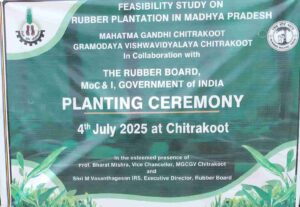Important Soil Science MCQ

Soil science is a fundamental branch of agriculture and environmental studies, focusing on soil formation, classification, and management. It plays a crucial role in sustainable agriculture, water management, and ecosystem balance. Understanding soil properties helps improve crop productivity and maintain soil health. Competitive exams for agriculture, forestry, and environmental sciences often include questions on soil science. This general soil science MCQ series is designed to help students and aspirants strengthen their knowledge of general soil science.
General Soil Science MCQ PDF Download
1. What is the smallest soil particle?
A) Sand
B) Silt
C) Clay
D) Gravel
📝 Additional Information
Clay (<0.002 mm):
The finest soil particle, with high water retention and sticky texture.
Has high CEC (Cation Exchange Capacity) due to negative charges.
Silt (0.002–0.05 mm):
Feels smooth like flour, intermediate between sand and clay.
Sand (0.05–2 mm):
Gritty texture and drains water quickly due to large pores.
Gravel (>2 mm):
It is not considered true soil; it is used in construction.

2. Which soil horizon is richest in organic matter?
A) A Horizon (Topsoil)
B) B Horizon (Subsoil)
C) C Horizon (Parent Material)
D) R Horizon (Bedrock)
📝 Additional Information
A Horizon (Topsoil):
0–30 cm depth, dark-colored due to humus.
Contains plant roots, microbes, and nutrients.
B Horizon (Subsoil):
Accumulates clay, iron, and aluminum leached from above.
C Horizon:
Partially weathered parent rock, less biological activity.
R Horizon:
Unweathered bedrock, impenetrable by roots.

3. What is the ideal soil pH range for most crops?
A) 3.0–5.0 (Highly acidic)
B) 5.5–7.5 (Slightly acidic to neutral)
C) 8.0–9.0 (Alkaline)
D) 9.5–11.0 (Highly alkaline)
📝 Additional Information
- Optimal nutrient availability (N, P, K, Ca, Mg).
Microbial activity thrives in this range.
<5.5 (Acidic):
Aluminum toxicity may occur, phosphorus becomes fixed.
>7.5 (Alkaline):
Phosphorus binds with calcium, reducing availability.
4. Which nutrient is most prone to leaching in sandy soils?
A) Nitrogen (as nitrate)
B) Phosphorus
C) Potassium
D) Calcium
📝 Additional Information
Nitrate (NO₃⁻):
Negatively charged and not held by soil particles.
Easily washed away by water (leaching).
Phosphorus (P):
Binds tightly to soil (immobile).
Potassium (K⁺) & Calcium (Ca²⁺):
Held by CEC (cation exchange capacity).
Basics test of Soil Science MCQ
5. What does CEC (Cation Exchange Capacity) measure?
A) Soil’s ability to hold positively charged nutrients
B) Soil’s water retention capacity
C) Soil’s acidity level
D) Soil’s organic matter content
📝 Additional Information
CEC:
Measures how well soil retains Ca²⁺, Mg²⁺, K⁺, NH₄⁺.
High CEC: Clayey & organic-rich soils.
Low CEC: Sandy soils (nutrients leach easily).
6. Which soil structure is best for plant growth?
A) Granular
B) Platy
C) Blocky
D) Massive
📝 Additional Information
- Granular:
Small, crumb-like aggregates, ideal for root growth & aeration.
Platy:
Flat layers restrict root penetration.
Blocky:
Angular chunks, moderate drainage.
Massive:
No structure, compacted & poorly aerated.

7. What causes soil salinity?
A) Excessive irrigation + poor drainage
B) High organic matter
C) Acid rain
D) Overuse of urea
📝 Additional Information
Salinization Process:
Irrigation water contains dissolved salts (Na⁺, Cl⁻).
Poor drainage causes salt accumulation at the surface.
Result: Plants face osmotic stress (unable to absorb water).
8. Which microorganism fixes atmospheric nitrogen?
A) Rhizobium
B) Nitrosomonas
C) Pseudomonas
D) Bacillus
📝 Additional Information
Rhizobium:
Forms nodules on legume roots and converts N₂ → NH₃.
Nitrosomonas:
Converts NH₃ → NO₂⁻ (nitrification).
Pseudomonas/Bacillus:
Decomposers do not fix nitrogen.
9. Laterite soils are rich in:
A) Iron & aluminum oxides
B) Calcium carbonate
C) Sodium chloride
D) Silica
📝 Additional Information
Formation:
Tropical climates with heavy rainfall leach silica & nutrients.
Iron (Fe₂O₃) & aluminum (Al₂O₃) oxides remain, giving a red color.
Low fertility due to nutrient loss.
10. What is the primary role of soil organic matter?
A) Improves water retention & nutrient supply
B) Increases soil alkalinity
C) Reducing soil porosity
D) Hardens soil structure
📝 Additional Information
Benefits of Organic Matter:
Humus releases N, P, and S slowly.
Enhances soil structure (granular form).
Increases water-holding capacity (critical for sandy soils).
Why Not Other Options?
B: Organic matter decomposition lowers pH (acidic).
C/D: It improves porosity, preventing compaction.
17. Which nutrient deficiency causes 'chlorosis' in young leaves first?
A) Nitrogen
B) Iron
C) Potassium
D) Phosphorus
Answer: B) Iron
Explanation:
Think of iron as a chlorophyll factory worker:
Immobile nutrient: Can't move from old to new leaves.
Symptoms:
- Interveinal yellowing (veins stay green).
- Stunted growth in acidic soils (pH>7.5 locks iron).
Fix:
- Foliar spray of FeSO₄ (1% solution).
- Add organic matter to chelate iron.
Unlike nitrogen (mobile, yellows old leaves first), iron's immobility makes young leaves vulnerable. Mango orchards often show this in alkaline soils.
11. Why does freshly plowed soil smell earthy?
A) Due to iron content
B) Bacteria releasing geosmin
C) Plant roots decaying
D) Sunlight reacting with clay
📝 Additional Information
Why B? Soil bacteria (Streptomyces) produce this compound.
Why not A? Iron has no distinct smell.
Why not C? Decaying roots smell rotten, not earthy.
Why not D? Sunlight doesn’t create smells this way.

12. Which soil would drain fastest?
A) 40% sand, 40% silt, 20% clay
B) 70% clay, 20% silt, 10% sand
C) 80% sand, 15% silt, 5% clay
D) Equal parts sand/silt/clay
📝 Additional Information
Why C? More sand = larger spaces between particles.
Why not B? High clay = slow drainage (tiny pores).
Why not D? Loam drains moderately, not the fastest.
A) Soil completely saturated with water
B) Water left after gravity drainage
C) Soil completely dry
D) Maximum amount of fertilizer soil can hold
📝 Additional Information
Why B? It’s the water plants can actually use.
Why not A? That’s saturation (too much water).
Why not C? Dry soil has no field capacity.
Why not D? Unrelated to fertilizer.

14. Why do clay soils crack when dry?
A) Plant roots break the surface
B) Shrinking as water evaporates
C) Earthworms create tunnels
D) Salt crystals forming
📝 Additional Information
Why B? Clay particles cling tightly to water.
Why not A? Roots don’t cause large cracks.
Why not C? Worm tunnels are small holes.
Why not D? Salts cause whitish crusts, not cracks.
15. Which increases soil acidity?
A) Adding limestone
B) Pine needle mulch
C) Wood ash
D) Frequent watering
📝 Additional Information
Why B? They decompose into acidic compounds.
Why not A/C? Limestone/ash reduces acidity.
Why not D? Water alone doesn’t change pH much.
16. What's the white crust on some soils?
A) Fungal growth
B) Salt deposits
C) Exposed quartz
D) Spider eggs
📝 Additional Information
Why B? Evaporation leaves salts behind.
Why not A? Fungi look fuzzy, not crusty.
Why not C? Quartz is gritty, not powdery.
Why not D? Eggs are clumped, not evenly spread.
17. Why do farmers test soil before planting?
A) To count earthworms
B) Check nutrient levels
C) Measure soil temperature
D) Find buried treasures
📝 Additional Information
Why B? It ensures proper fertilizer use.
Why not A? Worm counts are for research.
Why not C? The Temp is checked separately.
Why not D? That’s archaeology!
18. What causes water to pool on compacted soil?
A) Reduced infiltration
B) Increased evaporation
C) Too many earthworms
D) High nitrogen content
📝 Additional Information
Why A? Compression closes pore spaces.
Why not B? Evaporation removes water.
Why not C? Worms improve drainage.
Why not D? Nitrogen doesn’t affect puddling.
19. How does cover cropping help soil?
A) Prevents erosion
B) Attracts pollinators
C) Makes soil more salty
D) Kills weeds permanently
📝 Additional Information
Why A? Roots hold soil; leaves break wind/rain impact.
Why not B? It’s a secondary benefit, not the main purpose.
Why not C? It reduces salt buildup.
Why not D? Weeds return if stopped.
20. Why is topsoil most important for plants?
A) Contains most nutrients
B) Always stays moist
C) Never gets compacted
D) Absorbs all sunlight
📝 Additional Information
Why A? Organic matter concentrates here.
Why not B? It dries out faster than subsoil.
Why not C? It is easily compacted by machinery.
Why not D? Sunlight hits the surface, not just topsoil.
21. What causes the red color in some soils?
A) High nitrogen content
B) Iron oxide compounds
C) Excessive organic matter
D) Calcium carbonate deposits
📝 Additional Information
- Why B? Iron oxidizes (rusts) to form hematite (Fe₂O₃), which gives a red color.
- Why not A? Nitrogen is colorless and doesn’t affect soil color.
- Why not C? Organic matter makes soil darker (brown/black), not red.
- Why not D? Calcium carbonate makes soil white/gray.
22. Why is loam considered ideal for gardening?
A) It’s always sterile
B) Perfect sand-silt-clay balance
C) Naturally contains pesticides
D) Never needs watering
📝 Additional Information
- Why B? Loam has 40% sand, 40% silt, and 20% clay for optimal drainage and moisture.
- Why not A? Good loam contains beneficial microbes – it’s not sterile.
- Why not C? Loam doesn’t contain pesticides unless added.
- Why not D? All soils need watering – loam just manages moisture better.

23. What does adding lime to soil accomplish?
A) Makes soil more acidic
B) Raises pH (reduces acidity)
C) Kills all earthworms
D) Increases salt content
📝 Additional Information
- Why B? Lime contains calcium carbonate that neutralizes acid.
- Why not A? Lime does the opposite—it reduces acidity.
- Why not C? Earthworms tolerate moderate liming.
- Why not D? Lime is different from table salt (NaCl).
24. Why shouldn't you work wet clay soil?
A) It becomes too fertile
B) Causes permanent compaction
C) Attracts harmful insects
D) Makes plants grow too fast
📝 Additional Information
- Why B? Wet clay particles stick together, destroying pore spaces forever.
- Why not A? Working wet doesn’t affect fertility.
- Why not C? Insects aren’t specifically attracted by wet clay.
- Why not D? Compaction actually stunts plant growth.
25. What do mycorrhizal fungi do for plants?
A) Steal their nutrients
B) Extend their root systems
C) Make flowers smell stronger
D) Change leaf colors
📝 Additional Information
- Why B? Fungal hyphae act like extra roots, increasing absorption by 10x.
- Why not A? They have a mutualistic relationship (both benefit).
- Why not C? No effect on flower fragrance.
- Why not D? Don’t affect chlorophyll or pigments.

Related content
MGCGV Becomes First University in Madhya Pradesh to Start Rubber Plantation in Collaboration with Rubber Board of India
First time rubber plantation in Madhya Pradesh In a historic...
Read MoreTPSC Agriculture Officer Exam Syllabus 2025 Get a detailed breakdown of the syllabus with exam pattern
TPSC Agriculture Officer Exam Syllabus 2025 and other important updates...
Read MoreTFRI Technical Assistant exam 2025! Get a detailed breakdown of the official syllabus, exam pattern, eligibility,
TFRI Technical Assistant Syllabus 2025: Your Roadmap to Success! Are...
Read MoreDownload IBPS AFO Mains Previous Year Question Paper 2024 with answers & topic-wise explanations.
Introduction of IBPS AFO Mains Previous Year Question Paper 2024...
Read More



